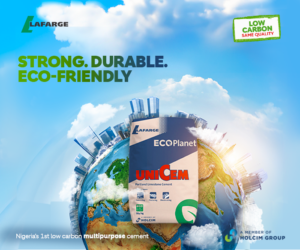Sunil Kaushal, CEO of Standard Chartered Africa and Middle East (AME) has stated the importance of financing a sustainable future.
While climate change may have taken a back seat in a news cycle dominated by COVID 19, war and the cost-of-living crisis, the risks and threats associated with our warming planet remain the biggest long-term threat to our combined economic future.
Banks and financial institutions will be critical to managing that risk and this includes financing of sustainable infrastructure, supporting transition and investing in green innovation. In fact, the banking industry has a responsibility to bridge top-down and bottom-up approaches to net-zero and help the public and private sectors realise the vast opportunities the energy transition and the move to sustainable infrastructure promises.
We can do that by providing capital to finance the investment in renewables, climate adaptation technologies and the transition to a ‘circular economy’ which encourages sustainable use of resources.
According to EY, financial institutions recognise that the transition to net-zero will involve more than investments and underwriting for “green” assets and businesses such as renewables and electric vehicles. To achieve net-zero across the whole economy, legacy carbon-intensive assets and companies will require financing to help them transition to a cleaner future.
For businesses, this means a fundamental change to operations, and that, in turn, requires capital. Insurers, lenders and investors will play a crucial role in making that capital available and in incentivising and supporting their clients and investees as they make their transitions.
While stimulating growth through investment in roads, buildings and power supplies isn’t a new strategy, now it offers an opportunity to redefine the traditional playbook and focus on investing and financing sustainably for the longer term.
Creating sustainable and climate-friendly infrastructure will, however, require finance that is fit for the future. There is a growing concern, for example, around stranded asset risk – particularly for long-term investments such as infrastructure. Infrastructure projects need to consider risks 10 years and beyond into the future, many of which may not be immediately apparent. These risks include rising sea levels, increasing temperatures, drought, and coastal erosion. There are also financial and economic risks associated with making investments outside an ESG framework, this includes changes to regulatory settings that may disadvantage or penalise these investments.
Projects that are climate adapted from the outset reduce some of these risks and are more likely to stand the test of time, so banks will need to take into account the potential climate risks over the lifespan of the project to ensure resilience and protect investments.
Sustainable infrastructure projects, however, are traditionally more difficult to make bankable. With a bit of thinking, though, there are usually profitable solutions. For example, in a renewable energy plant you have clear cash flows linked to the price of generated energy or for an energy efficiency improvement project, you have energy savings which can be translated into cost savings, and they can repay financing.
At Standard Chartered, we are committed to playing our part in supporting sustainable projects in the region. We take a firm stand in accelerating to net zero by helping emerging markets in our footprint reduce carbon emissions as fast as possible and without slowing development, putting the world on a sustainable path to net zero by 2050.
Sustainability has long been a core part of our strategy, and we have committed USD40 billion of project financing services for sustainable infrastructure and USD35 billion of services to renewables and clean-tech projects by the end of 2024. We have also committed to catalysing $300 billion in sustainable investments by 2030. The projects we finance will encourage trade and growth and contribute to a better quality of life through sustainable development.
The need for action from finance providers is to not only decarbonise their own balance sheets but also to help businesses in the real economy move towards a sustainable future. A successful net-zero transition must be just, leaving no nation, region or community behind and, despite the hurdles, action needs to be swift. To meet the 2050 goal, we must act now, and we must act together: companies, consumers, governments, regulators and the finance industry must collaborate to develop sustainable solutions, technologies and infrastructure.
























Future Sustainable Product:
Rentolog electric water technology had been analyzed and found worthy for consumer taste. We give thanks to God who made this innovation possible.
HOW DO IT WORK?
When water is supplied to the tank, the water flows into a region, the region is blocked by an arc as in your conventional dam, the pressure of the water will increase, the arc opens and the pressure reduces. According to Bernoulli principle, the lower the pressure increases the speed of the fluid(water) and higher the pressure, the speed (velocity) reduces. The water speed is maintained by Pascal principle, which states the fluid at a point or region is evenly distributed . The flow to a region of empty space , gravity and magnetic field of the magnet pull it towards the turbine as in the mountain fall But for an effective precision the entrance to the turbine region will be small just like in the spark plug in Internal combustion engine. The reason is for the water to concentrate in the blade of the turbine for turning purposes . As the water turns the turbine , Faraday law of magnetic field will occur, the turning of the turbine blade will convert the circular motion to reciprocating motion. A small electric current will be supplied to the coil and the rotor which strengthens the electricity and supplies it to the battery, and your home. The water will flow back to the tank passing through the non return valve to continue the thermodynamic flow equation. This process conserves energy and requires minimum electricity to operate and also it is efficient. The body of the RET system is made of an insulator to prevent escape of electricity .